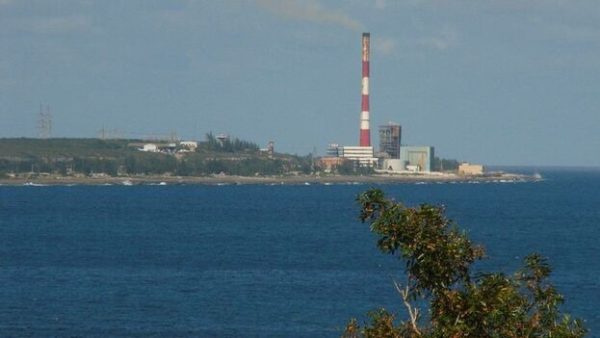The Long Blackout Season Is Returning Throughout Cuba

HAVANA TIMES – Heat begins to make the inhabitants of the Island sweat, and the demand for energy grows faster than the recover of generation capacity. This Tuesday, many Cubans choked on their breakfasts when Cuban television announced power cuts of up to seven hours in some parts of the Island. As a rule, the capital is the least affected.
“Yesterday in Sancti Spíritus they turned off the electricity around 5 in the afternoon and turned it on around 8:30. The blackouts are taking off,” says the 14ymedio correspondent in the province, which is already enduring the first prolonged cuts.
A little later, the Unión Eléctrica (UNE) disseminated on its social networks the summary of yesterday’s activity, confirming 7 p.m. as the worst moment of the day. The company publishes its generation and deficit forecast of electricity during the evening hours of peak consumption.
Several units of the different Cuba power plants are out of service with varying time needed for repairs. These include units at the Máximo Gómez, in Mariel (Artemisa); the Ernesto Guevara, in Santa Cruz (Mayabeque); the Antonio Guiteras, in Matanzas; the Diez de Octubre, in Nuevitas (Camagüey); the Lidio Ramon Perez, in Felton (Holguin); and the Antonio Maceo, called Renté, in Santiago de Cuba.
They are joined by three other units under maintenance, one in Cienfuegos and two in the Renté plant, in addition to the deficiencies in the distributed generation.
Despite the lack of expectations that citizens already have in the face of the Government’s promises, some customers regret having believed the words of the Minister of Energy and Mines, Vicente de la O Levy, who proposed a maintenance program aimed at repairing the thermoelectric plants that would began in January, when the climate is cooler and therefore favorable, and end in May, to tackle the warm weather when demand skyrockets.
In January, the minister announced that with this plan the power cuts weren’t going to disappear, but they would be for only one or two hours compared to 14 to 16 hours last summer, when an unprecedented crisis led to a multitude of protests in different parts of the country. However, already in February, blackout periods began to be extended to three and four hours.
“And we thought that at this point the situation was going to be resolved with scheduled maintenance,” complains a disappointed user on the UNE networks.
Between February 13 and 22, from the center to the east of Cuba, there were four large blackouts that left half the Island in the dark, fueling the fears of the population and the feeling of grievance among the inhabitants of that area, who feel discriminated against. All the Turkish floating power plants that contribute to electricity generation are located in the west of the country.
The authorities of the sector said that one floating plant was going to be sent to Santiago de Cuba to minimize the problem, since the location of all of them in Havana — due to the greater presence of companies and concentration of population — was catastrophic for the east of the Island, but the inhabitants continue to feel affected and report that the floating plant still hasn’t arrived.
“The party started again, to suffer with the Apagón [blackout] orchestra giving their annoying concerts all over Cuba. The same never-ending story,” a client bitterly quipped, in a play on words that recalls the traditional Aragon orchestra. Another is already ahead of the fear that exists on the Island: “I’m just saying that the heat is coming and they are screwing us again with 10 or 12 hours of blackouts.”
Translated by Regina Anavy for Translating Cuba






The lack of credit is just one aspect of the problem. Cuba lacks the ability to maintain technology projects post construction. Solar farms, while posing low maintenance costs, are highly vulnerable to hurricanes and require special security measures because they typically are relatively lower voltage and therefore wiring is an attractive theft target. Unattended solar farms would be vandalized for their wiring unless guarded.
DO any of you really know what’s been happening in Cuba? They have invested in Solar energy all over the country. But it takes time and allot of money to build a solar system so back off and do a little investigating before you go off on them. Or better yet send some “denaro” to a support group.
“With the amount of sunshine Cuba gets, why no investment in Solar Generated electricity?”
Because no one will lend Cuba a dime to pay for it. When you renege on your debt multiple times, you can’t expect people to lend you more money. I’m sure the Turkish Power Ships are provided on a cash basis, no credit.
Martin
Because the government don’t invest money they transfer it to their overseas accounts.
With the amount od sunshine Cuba gets, why no investment in Solar Generated electricty?
Martin Tibbetts UK “Friend of Cuba”